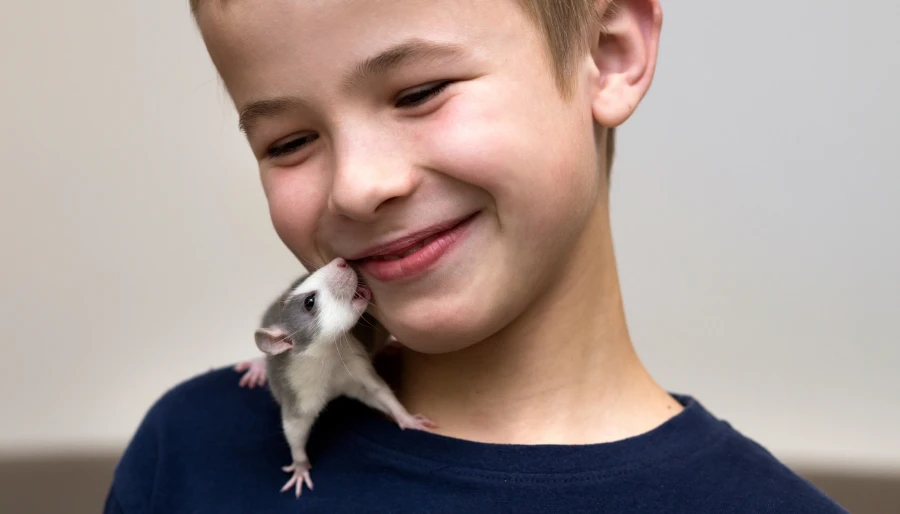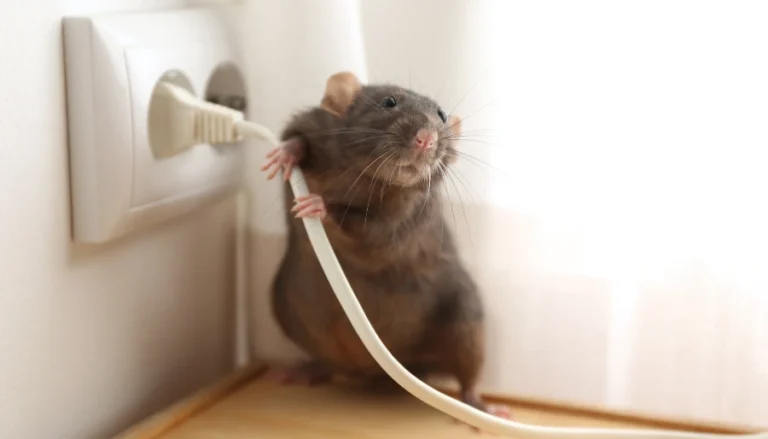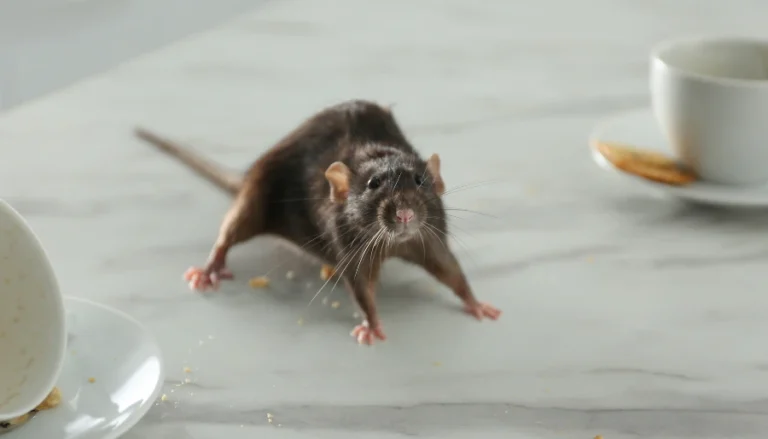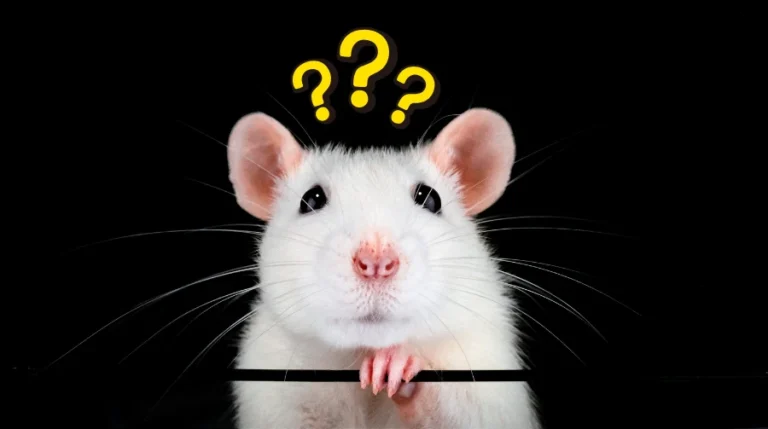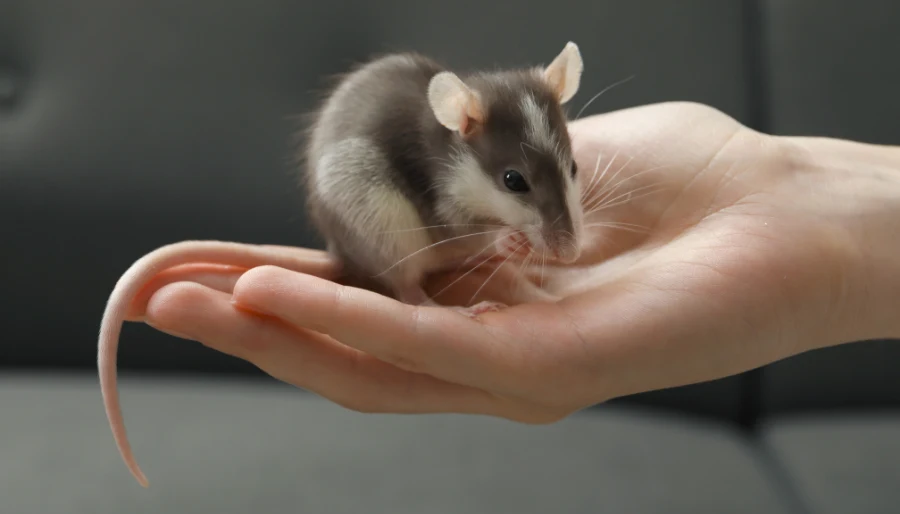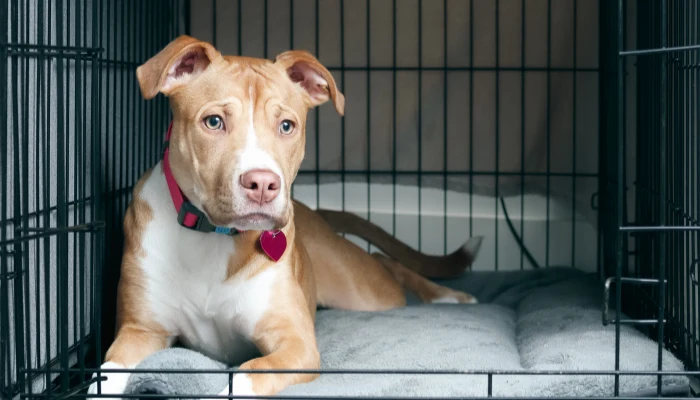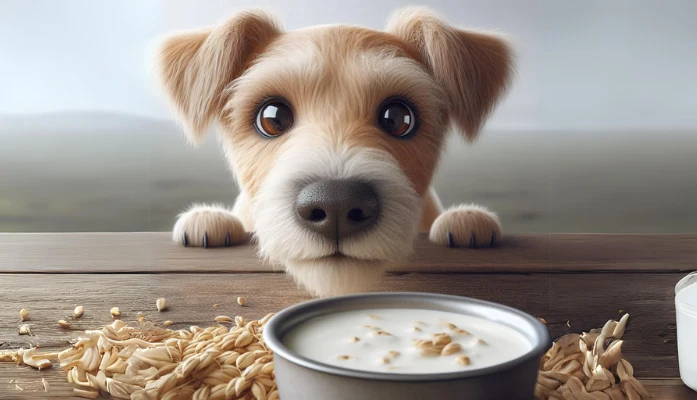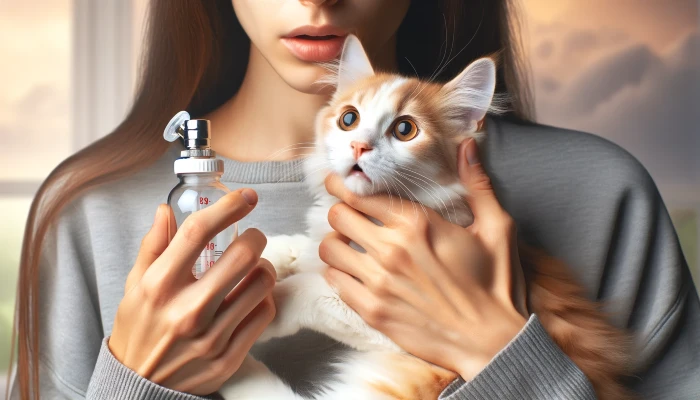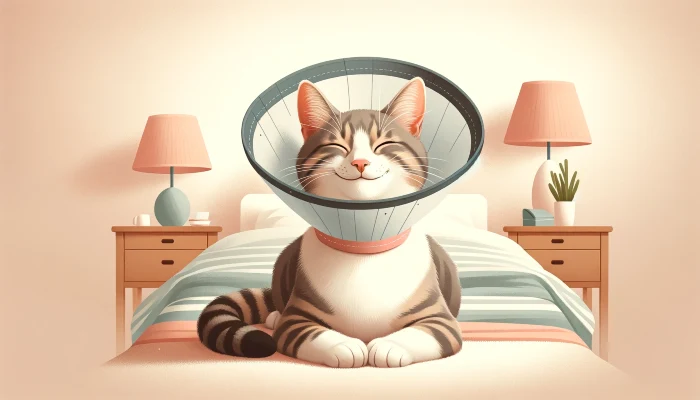How to Feed Your Pet Rat Right
Feeding a pet rat isn’t just about keeping it full. The food you choose has a direct impact on how long it lives, how active it is, and how healthy it stays. A good diet keeps your child’s rat energetic and curious. A poor one shortens its life and leads to problems you could have avoided.
Rats don’t eat the same way as other small pets. They’re omnivores, which means they need a mix of plant foods and protein. Once you understand how to build a balanced diet, feeding them becomes easy. It’s also a great way to teach your child about responsibility and how what we eat affects how we feel.
Why Pet Rat Nutrition Is Different
A rat’s diet isn’t the same as a mouse’s or a guinea pig’s. Mice do fine on grains and lower protein meals. Guinea pigs need lots of fiber and vitamin C. Rats fall somewhere in between. They need both fresh produce and small amounts of animal protein to stay healthy.
Feeding them the wrong food leads to real problems. Diets designed for mice or guinea pigs don’t give rats enough of what they need. Feeding them like dogs or cats causes obesity and liver trouble. Their diet has to match their species, and once it does, their energy, weight, and lifespan all improve.
The Basics of a Healthy Rat Diet
The foundation of any good rat diet is a high-quality lab block. These are pellets made specifically for rats and cover most of their essential nutrients. They’re reliable and easy, but they shouldn’t be the only thing your rat eats. Fresh vegetables, small amounts of fruit, and lean proteins round out the meal plan and add variety.
Feeding them twice a day works best. A morning meal and an evening meal mimic their natural eating habits and help prevent overeating. A balanced daily menu might include:
- A tablespoon of lab blocks
- A handful of chopped vegetables
- A small portion of cooked egg or chicken
- A tiny piece of fruit as a treat
Make sure fresh water is always available and bowls, and water bottles, are cleaned often.

Protein and Fat: The Right Mix
Protein helps build muscle and keeps the immune system strong. Fat gives energy, but too much of it leads to weight gain and health problems.
Adult rats need about 12 to 16 percent protein and around 4 to 5 percent fat.
Cooked eggs, chicken, turkey, tofu, and lab blocks are all good protein choices. Healthy fats come from lean meats, cooked beans, and a few nuts here and there. Skip processed meats, fried foods, and anything with added sugar or salt. Rotating protein and fat sources keeps meals interesting and well-balanced.
If your rat doesn’t get enough protein, it might seem weak or heal slowly from small injuries. Too much fat, on the other hand, can cause obesity or even diabetes. Watch their weight and energy levels and adjust portions as needed.
Fruits and Vegetables: Colorful Nutrition
Fresh produce adds fiber, hydration, and essential vitamins to a rat’s diet. Safe options include peas, bell peppers, carrots, broccoli, seedless apples, and zucchini. The more variety, the better.
Fruit should be a small part of the diet because of its sugar content. Vegetables should take up more space in the bowl. Always wash produce thoroughly and remove seeds or pits before serving.
Some foods should never make it into the cage. Citrus fruit can damage the kidneys of male rats. Raw sweet potatoes and green potatoes are toxic. Iceberg lettuce offers almost no nutrition and can upset their digestion. Dried corn is risky because it can grow harmful fungi.
Portion Control and Feeding Routine
Even healthy food can cause problems if there’s too much of it. Overfeeding leads to obesity, which shortens a rat’s life. A good rule is a tablespoon of lab blocks, a small serving of vegetables, and a small piece of protein each day. Treats should stay under five percent of the diet.
Two meals a day is ideal. It keeps their metabolism steady and helps prevent hoarding or overeating. If you notice hidden food or leftovers, you may be giving too much. Age, health, and activity level all affect how much they need, so adjust portions as they grow and change.
Foods That Are Dangerous for Rats
Some foods are more than just unhealthy. They’re dangerous. These should never be part of your rat’s diet:
- Chocolate
- Raw potatoes or beans
- Citrus fruits for males
- Processed snacks
- Sugary treats
- Large amounts of seeds or nuts
Also, be cautious with generic “rodent mixes.” Many are too fatty and lack the right nutrients. If you’re trying a new food and aren’t sure, look it up first or ask a vet.
Simple Pet Rat Food Chart
| Food | Give? | How much / how often | Why (plain English) (medical term) |
|---|---|---|---|
| Vegetables | |||
| Romaine, arugula, endive, bok choy, cilantro, dill | Safe | Small handful daily mix | Good water + vitamins. Gentle on tummy. |
| Bell pepper, cucumber, zucchini, celery | Safe | A few pieces daily | Crunchy, low-calorie snacks. |
| Carrot | Sometimes | Thin slices, a few times a week | Sweet; too much adds sugar. |
| Peas, green beans (fresh or thawed frozen) | Safe | Tablespoon most days | Nice fiber and plant protein. |
| Sweet corn kernels (plain) | Sometimes | Teaspoon portions | Starchy; save for treats. |
| Broccoli, cauliflower, cabbage, Brussels sprouts, kale | Sometimes | Small bites; try every other day | Can cause gas. Start tiny to see tolerance. |
| Spinach, beet greens | Sometimes | Rotate, not daily | High in natural salts called oxalates (may block calcium). |
| Cooked pumpkin/squash, sweet potato (plain) | Safe | Small cubes a few times a week | Soft, easy to digest, vitamins. |
| White potato — cooked only | Sometimes | Small cubes, not daily | Starchy; avoid butter/salt. Never raw or green parts. |
| Green potato skins/sprouts, green tomatoes, nightshade leaves | Never | — | Natural poison called solanine (can upset nerves and tummy). |
| Rhubarb leaves | Never | — | Very high oxalates (can harm kidneys). |
| White/cremini mushrooms — cooked | Sometimes | Small portion, cooked only | Raw can be tough to digest; cooking helps. |
| Fruits | |||
| Apples, pears (no seeds), berries, melon, mango, kiwi | Safe | 1–3 small pieces daily | Vitamins + water. Don’t overdo the sweet ones. |
| Banana, grapes/raisins, dried fruit (unsweetened) | Sometimes | Tiny pieces; treat only | High sugar. Can cause weight gain. |
| Citrus (orange, lemon, lime, grapefruit) — MALES | Never (for males) | — | Oil called d-limonene may hurt male rat kidneys (α2u-globulin pathway). |
| Citrus — FEMALES | Sometimes | Small piece, rarely | Acidic; many owners skip it to be safe for all rats. |
| Apple seeds; pits of cherry/peach/apricot | Never | — | Seeds/pits can release cyanide (dangerous). |
| Avocado flesh | Sometimes | Very small piece | Very rich/fatty. Too much upsets stomach. |
| Avocado skin, pit, leaves | Never | — | Contains persin (a natural toxin). |
| Grains & Starches | |||
| Oats, brown rice, barley, quinoa, whole-grain pasta (cooked) | Safe | Teaspoon–tablespoon, a few days/week | Good energy. Don’t overfill the bowl. |
| Whole-grain bread/crackers (plain, low-salt) | Sometimes | Small piece | Filler food. Can add salt if not careful. |
| Raw kidney beans or other raw/undercooked beans | Never | — | Have strong natural proteins called lectins (phytohemagglutinin) that make rats very sick. Cooked beans are fine. |
| Protein & Dairy | |||
| Egg (scrambled/boiled), plain cooked chicken/turkey/fish | Safe | Teaspoon portions, a few times/week | Easy protein. No seasoning, no bones. |
| Plain yogurt or kefir (no sweeteners) | Sometimes | Teaspoon treat | Dairy can be rich; some rats get soft poop. |
| Hard cheese | Sometimes | Pea-size bit | Salty and fatty. Tiny amounts only. |
| Tofu/tempeh | Safe | Small cubes, a few days/week | Good plant protein. |
| Blue/mold-ripened cheeses (e.g., Roquefort) | Never | — | Can contain mold toxins (roquefortine C) that are bad for rodents. |
| Onion/garlic in big amounts; garlic powder | Never | — | Can damage red blood cells in animals (thiosulfates ➜ “Heinz bodies”). Tiny bits in cooked food once in a while are usually avoided anyway. |
| Nuts, Seeds & Spreads | |||
| Sunflower/pumpkin seeds, almonds, walnuts | Sometimes | 1–2 pieces as treats | Very calorie-dense. Easy to overfeed. |
| Peanut butter | Sometimes | Pea-size, thinned with water/yogurt | Sticky; risk of choking if given thick. |
| Treats, Drinks & Other | |||
| Plain air-popped popcorn, one Cheerio | Sometimes | Training treat only | Fun but not nutritious. |
| Chocolate | Never | — | Has caffeine/theobromine (can speed heart and upset nerves). |
| Xylitol-sweetened gum/candy | Never | — | Very dangerous sweetener for many pets. Treat as toxic. |
| Alcohol; coffee/tea/energy drinks | Never | — | Hurts brain and heart (stimulants/depressants). |
| Soda and fizzy drinks | Never | — | Rats can’t burp or vomit; bubbles make them feel bad. Plus sugar/artificial sweeteners. |
| Moldy or spoiled food | Never | — | Can carry toxins that harm the liver and nerves (mycotoxins). |
| Water (fresh) | Safe | Change daily | Best drink. Simple and safe. |
A Simple Daily Meal Plan
Here’s a balanced example of what a day of meals might look like:
Morning
Lab blocks with a small piece of cooked egg
Evening
Brown rice or whole wheat pasta with mixed vegetables
Treat
A tiny piece of banana or a few peas
Introduce new foods slowly so you can spot any changes in digestion or appetite. If something seems off, talk to a veterinarian before continuing.

Treats and Chews: Rewards and Enrichment
Treats are great for training and bonding, but they should be small and rare. Fresh fruit, a plain Cheerio, or a yogurt drop makes a good occasional reward. Avoid anything processed or high in sugar or salt.
Chewing is vital for dental health because a rat’s teeth never stop growing. Wooden toys, untreated branches, or unsweetened dog biscuits give them something safe to chew on and keep their teeth at the right length.
Myths About Feeding Pet Rats
Many people assume rats can eat anything. That’s one of the biggest myths out there. There’s no truth to that at all! Rats have specific nutritional needs. The wrong diet causes deficiencies, obesity, and even organ damage.
Another myth is that all fruits and vegetables are safe. Some, like citrus for males, can be harmful. Seed mixes are another trap. They’re often high in fat and don’t provide enough nutrients.
Knowing what’s true and what’s not helps you make better decisions and keeps your pet healthier for longer.
Teaching Kids How to Talk About Rat Diets
At some point, your child might be at a friend’s house with a pet rat or talk about theirs at school. Teaching them how to talk about proper feeding is important because it’s not just for rats.
Start by explaining why it’s never okay to feed someone else’s rat, or any pet, without permission. Teach your child that just because their rat eats something, doesn’t mean every rat can or should eat the same thing.
Animals are no different than people and every person is different, has different needs, and may have medical requirements that they don’t share (and don’t have to).
Different pets have different needs, and even safe foods can cause problems in large amounts. Encourage your child to ask first and to explain what they know about healthy rat diets. It’s a chance to build respect for other people’s pets and to teach responsibility beyond their own.
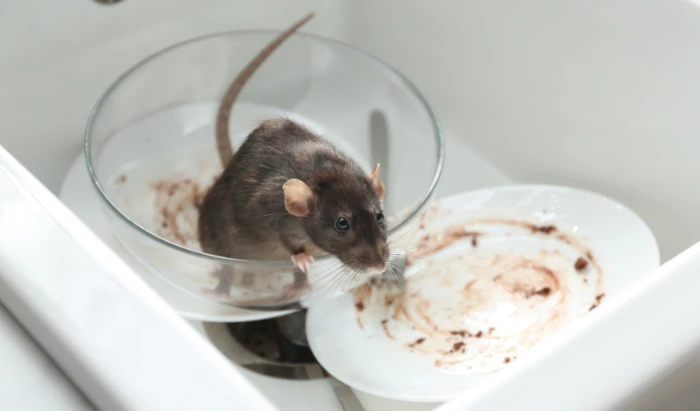
A Quick Look at Rat Diet History
Rats haven’t always eaten as well as they do today. In the past, they were often fed scraps and leftover grains. That led to short lives and poor health. Nutrition science has changed that. Today’s rats benefit from carefully balanced diets that support long, active lives.
Different parts of the world feed pet rats in slightly different ways. In Japan, small servings of steamed rice are common. In Europe and North America, lab blocks and fresh vegetables are the standard. The details vary, but the core principle is the same. A variety of safe, nutritious foods keeps them thriving.
Key Takeaways for Parents
- Rats need a balance of protein, fat, carbs, and vitamins
- A complete diet includes lab blocks, vegetables, lean proteins, and occasional fruit
- Portion control matters just as much as food quality
- Some foods, like chocolate, raw potatoes, and citrus for males, should never be fed
- Teaching kids about diet builds responsibility and care for animals

